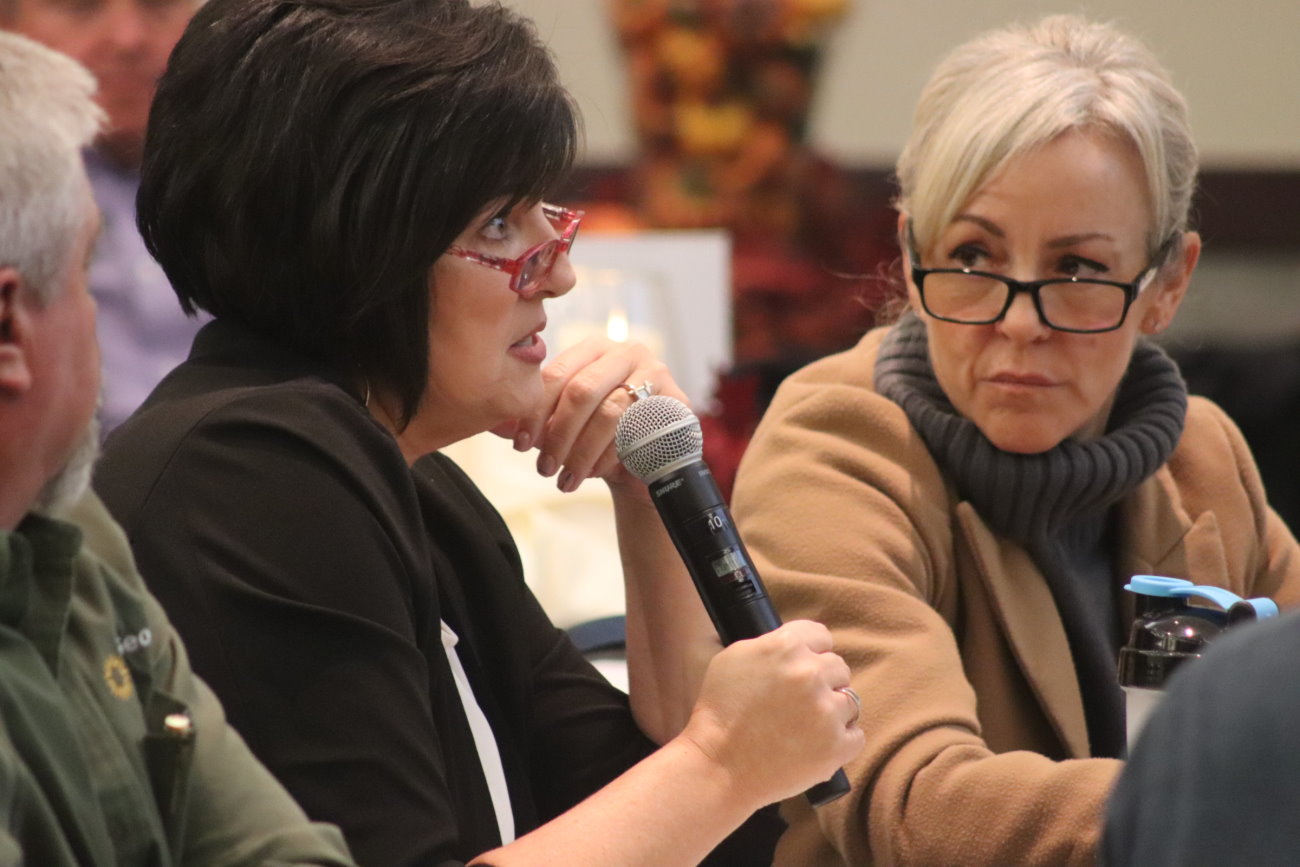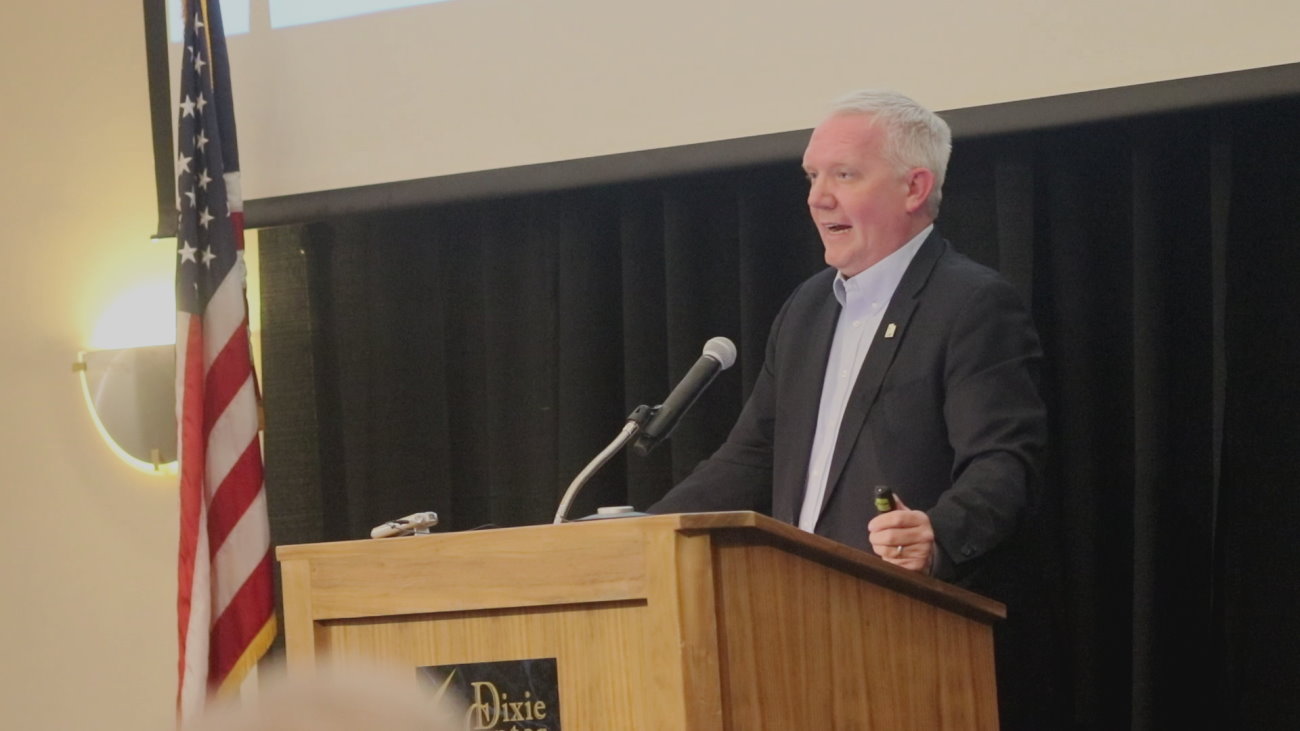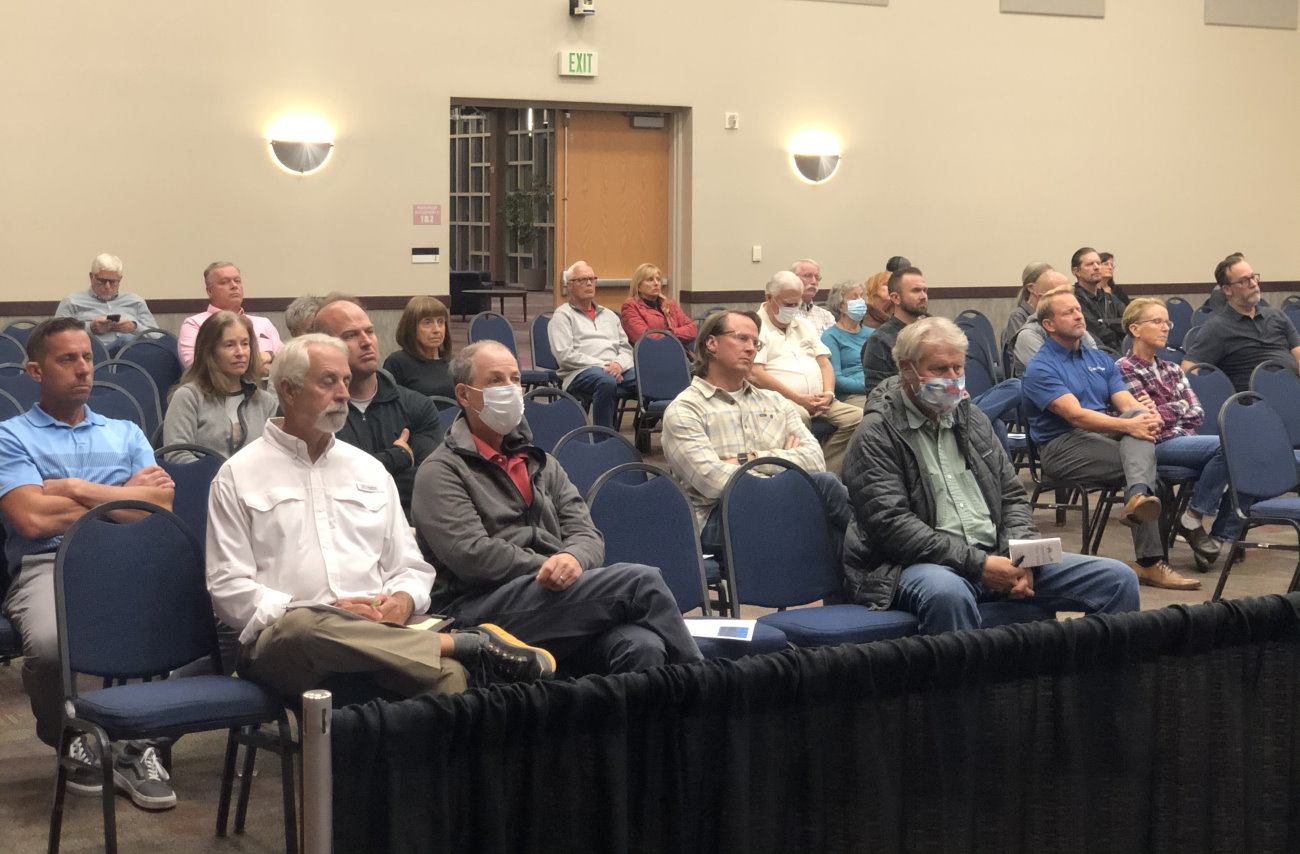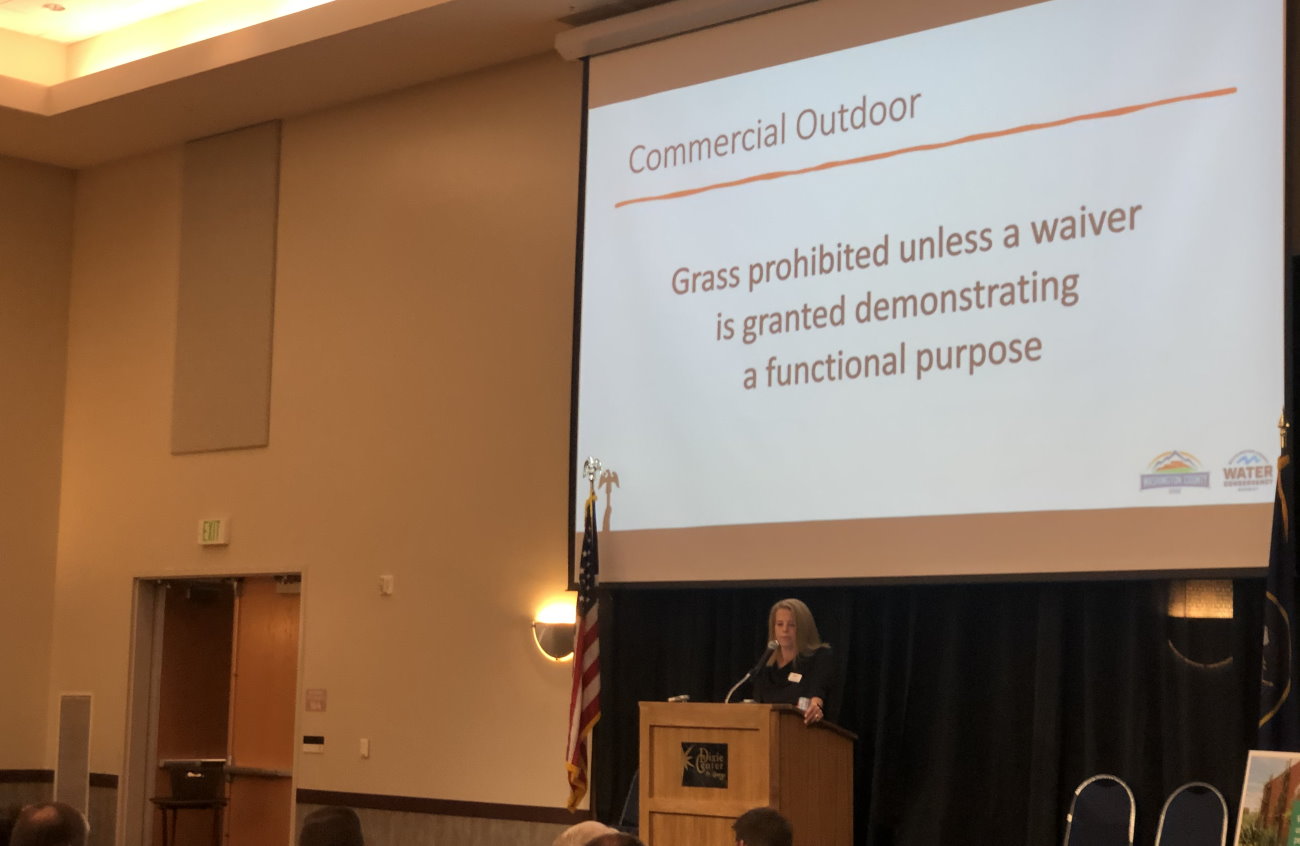
ST. GEORGE — Elected officials from across Washington County attended a water summit held in St. George on Tuesday in order to review and gauge overall support for conservation measures proposed by the Washington County Water Conservancy District.

A primary takeaway from the summit was that the need to apply water conservation measures was more pressing than ever and that there needs to be a united effort among the municipalities to implement and enforce those measures.
“It is so important that every city and town get on the same page when it comes to water conservation,” St. George Mayor Michele Randall said, adding that if St. George is the only city enacting conservation ordinances and rebates, “we’re not going to get far with conservation.”
Randall was one of many mayors and council members at the summit representing the municipalities of Washington County. In addition to voicing a general opinion of the water district’s water-use ordinance proposals, attendees also heard from state water officials about why conservation efforts are being pushed more than before.
Brian Steed, executive director of the Utah Department of Natural Resources, said water supply is not as predictable as it used to be and that the overall picture of water availability within the region looked bleak due to the ongoing drought. The drought that has been impacting the region for more than 20 years became especially severe over the last year due to poor snowpack and little rain.

While the drought’s impacts have been lessened somewhat due to monsoonal rains, Steed said ways to save water were needed now more than ever considering the area’s future water needs, especially when set against the increasing demand spurred on by the region’s growth.
Some of the ways the Utah Department of Natural Resources has pledged to help meet future water demands include acquiring local water rights from agricultural users – which Steed said was not the most feasible solution in Washington County due to the limit amount of farms – increasing water storage capacity, bringing water in from somewhere else, and implementing water conservation efforts.
The agency is dedicated to pursuing all of those avenues, Steed said, but he added that the element of time was not necessarily on their side.
Acquiring water rights can be a tedious process, prolonged by going through the proper agencies on the state and federal level assigned to review and approve such requests. And building new reservoirs and pipelines to bring water in, like the Lake Powell Pipeline, can takes years due to federal regulations. In both these cases, state and local agencies lose control over the process as it drags on, Steed said.
He said these agencies have to look for solutions that have more control and that can be moved on more immediately, and he pointed to conversation as that solution.
“Without increased conservation, we’re going to have a real problem meeting our supply needs in the very near-future.”

In the case of Washington County, state water officials recently reported that the county could run out of water in 10 years unless ways were found to prolong the water supply enough to meet continuing demand.
In regard to the implementation of local water conservation measures, Steed also recommended the municipalities look into water reuse and recycling systems. They can be pricey, he said, but are worth it.
Before concluding his comments, Steed said state water officials had seen great success in conservation efforts when handled regionally and not left to individual municipalities.
“We’ve seen better successes when this is done at a regional level than having infighting between municipalities,” he said.
Candice Hasenyager, director of the Utah Division of Water Resources, also spoke at the summit and focused on how growth, particularly when coupled with the drought, was one of the prime factors driving the push for conservation.
“We’ve seen growth to be one of our biggest economic drivers and one of our greatest challengers moving forward,” she said, adding that Washington County is projected to become the fourth most populated county in the state.

“I want to say simply, ‘Use less water,’ but we know there’s nothing simple about it,” Hasenyager said. “How we grow matters, and how we grow sets our water use patterns for decades to come.”
Factors that generally get people to change how much water they use are related to market and social trends, as well as policy intervention, she said, focusing on the latter as an option for the municipalities.
Policy invention, Hasenyager said, involves education efforts, pricing, transparent water billing, rebates and incentives to use less water, and landscaping ordinances.
Once Hasenyager and others concluded their remarks, the conservation measures recently recommended to the municipalities by the Washington County Water Conservancy District came up for discussion. Some of these measures had already been shared by the water district with the county’s towns and cities during their council meetings.
A list of the ordinances brought up for discussion during the summit is featured below.
Article continues below

These proposals primarily apply to new residential and commercial construction and not preexisting homes and businesses.
Applying proposed water-efficient building practices to new construction is estimated to cost 1/5 of what it would cost to retrofit existing structures, said Zachary Renstrom, executive director of the Washington County Water Conservancy District.

While there was consensus on many points surrounding the proposals, concerns were shared over the additional water meters on certain residential projects potentially raising housing costs. Another more overarching concern shared by many municipal officials was determining just what the right amount of allowable turf and landscaping on residential lots of varying size should be.
Hurricane Mayor John Bramall said the lot-size issue was one each city needed to figure out on its own and that he doesn’t believe in a one-size-fits-all solution in this case, which was a sentiment shared by many other elected officials.
“Each city needs to make its own decisions,” he said.
Randall agreed, yet added she believes a consensus will be met going forward, as the municipalities have “a tradition of working well together.”
At the conclusion of the summit, the water district was tasked by the elected officials with putting together a cost estimate of what the implementation of the proposed conservation measures would look like for each city and town. Additional detail regarding certain proposals was also requested.

“We’ll be happy to share what numbers we have that individuals would like to see,” Renstrom said, furthering repeating that it is ultimately up to the municipalities to pass and enforce any conservation policy. All the water district can do is make commendations.
While increased water conservation efforts have been shown to help prolong the ability of water districts and municipalities to meet water-use demands, Steed said those efforts can only go so far.
“Conservation alone will eventually cap out growth,” he said. “We’ll probably be considering additional storage capacity (reservoirs) here in the area, which we’re working with the Washington County Water Conservancy District on as well.”
Steed further stated, “We have to take water conservation a lot more seriously. We see the need now in a way we didn’t before.”
Copyright St. George News, SaintGeorgeUtah.com LLC, 2021, all rights reserved.